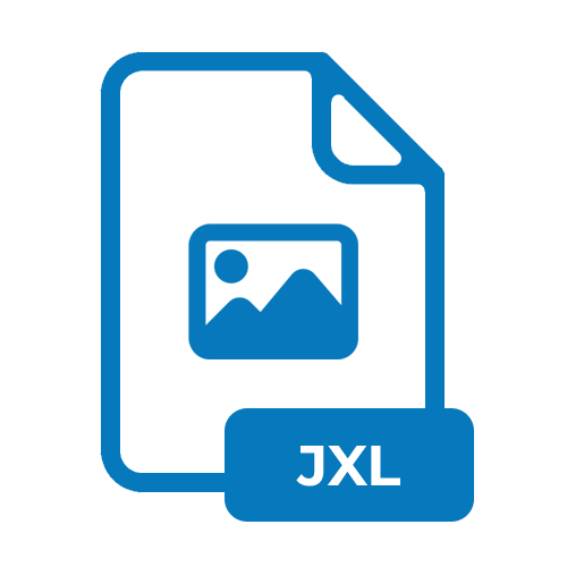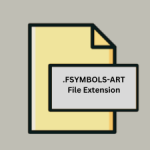.JXL File Extension

JPEG XL Image
| Developer | Joint Photographic Experts Group |
| Popularity | |
| Category | Raster Image Files |
| Format | .JXL |
| Cross Platform | Update Soon |
What is an JXL file?
.JXL file extension is primarily associated with files encoded in the JPEG XL format. JPEG XL, short for JPEG Extended Range Lossless, is a modern image compression standard developed to offer improved compression efficiency and quality over its predecessors. .JXL files typically contain high-quality images compressed using the JPEG XL algorithm.
More Information.
The quest for a successor to the widely used but aging JPEG compression standard led to the inception of the JPEG XL project in 2018.
The primary objective was to create a compression format that could deliver superior image quality at smaller file sizes, catering to the evolving needs of digital content creators, storage, and distribution platforms.
Origin Of This File.
The development of the JPEG XL format and consequently the .JXL file extension can be attributed to the need for more efficient and versatile image compression techniques.
The JPEG XL project was initiated by the Alliance for Open Media (AOM), a consortium of leading technology companies and organizations committed to advancing open media formats and technologies.
File Structure Technical Specification.
.JXL file comprises a stream of encoded image data conforming to the specifications defined by the JPEG XL standard.
Unlike traditional JPEG files, which rely on the discrete cosine transform (DCT) for compression, JPEG XL employs a more advanced compression scheme based on the versatile image format (AVIF) and Perceptually Uniform Color Space (PUCS).
The technical specifications of .JXL files encompass various components, including:
- Color Transformations: JPEG XL supports a wide range of color transformations, including RGB, YCbCr, and grayscale, enabling efficient representation of diverse image content.
- Entropy Coding: Entropy encoding techniques such as ANS (Asymmetric Numeral Systems) are utilized for efficient data compression, ensuring optimal compression ratios without compromising image quality.
- Predictive Coding: Predictive coding algorithms are employed to exploit spatial and spectral redundancies within the image data, further enhancing compression efficiency.
- Progressive Decoding: .JXL files support progressive decoding, allowing for the gradual rendering of images at increasing levels of detail, facilitating faster display and transmission over network connections.
- Lossless Compression: In addition to lossy compression, JPEG XL also incorporates robust lossless compression modes, enabling faithful reproduction of images without any degradation in quality.
How to Convert the File?
Converting .JXL files to other image formats or vice versa typically require specialized software tools capable of decoding and encoding JPEG XL images.
Here’s a step-by-step guide on how to convert .JXL files:
Using Image Editing Software:
- Adobe Photoshop (Windows/Mac):
- Open Adobe Photoshop.
- Go to File > Open and select the .JXL file you want to convert.
- Once the file is open, go to File > Save As.
- Choose the desired format (e.g., JPEG, PNG) from the dropdown menu.
- Adjust settings if necessary and click Save to convert the file.
- GIMP (Windows/Linux/Mac):
- Launch GIMP.
- Navigate to File > Open and select the .JXL file you wish to convert.
- After the file is open, go to File > Export As.
- Select the desired format and adjust settings as needed.
- Click Export to convert the file.
Using Online Conversion Services:
- There are various online services available that offer file conversion from .JXL to other formats. Simply search for “JXL to converter” in your preferred search engine to find suitable options. Upload your .JXL file, select the output format and follow the on-screen instructions to convert the file.
Advantages And Disadvantages.
Advantages:
- Improved Compression Efficiency: JPEG XL offers significantly better compression efficiency compared to traditional JPEG, enabling smaller file sizes without compromising image quality.
- Enhanced Image Quality: The advanced compression algorithms employed by JPEG XL result in superior image quality, with reduced artifacts and distortion, particularly at lower bitrates.
- Versatile Color Space Support: JPEG XL supports a wide range of color spaces and transformations, catering to diverse imaging applications and workflows.
- Progressive Rendering: .JXL files support progressive rendering, facilitating faster image loading and display in web browsers and other software applications.
Disadvantages:
- Limited Compatibility: Despite gaining traction, support for the JPEG XL format and the .JXL file extension is still relatively limited compared to established standards like JPEG and PNG.
- Processing Overhead: The computational complexity of JPEG XL compression algorithms may impose higher processing overhead, particularly on resource-constrained devices.
How to Open JXL?
Open In Windows
Using Image Viewing Software:
- Windows Photos: Double-click the .JXL file to open it in the default Photos app on Windows.
- IrfanView: Open IrfanView, go to File > Open, and select the .JXL file.
- XnView: Launch XnView, navigate to File > Open, and select the .JXL file you want to view.
Open In Linux
Using Image Viewing Software:
- GIMP: Open GIMP, go to File > Open, and select the .JXL file to view or edit it.
- Eye of GNOME (eog): Use the log command in the terminal followed by the path to the .JXL file to view it using the GNOME image viewer.
- XnViewMP: XnViewMP is also available for Linux and can be used to open .JXL files.
Open In MAC
Using Image Viewing Software:
- Preview: Double-click the .JXL file to open it in the default Preview app on macOS.
- Adobe Photoshop: Open Adobe Photoshop, go to File > Open, and select the .JXL file.
- Pixelmator: Launch Pixelmator, navigate to File > Open, and select the .JXL file you want to view or edit.
Open In Android
Using Image Viewing Apps:
- Google Photos: Open the Google Photos app, and navigate to the .JXL file, and tap to view it.
- QuickPic: Install QuickPic from the Google Play Store, open the app, and browse to the location of the .JXL file to view it.
Open In IOS
Using Image Viewing Apps:
- Photos App: Tap on the .JXL file in the Files app or any other file manager app to open it in the default Photos app on iOS.
- Adobe Photoshop Express: Install Adobe Photoshop Express from the App Store, open the app, and import the .JXL file to view or edit it.













